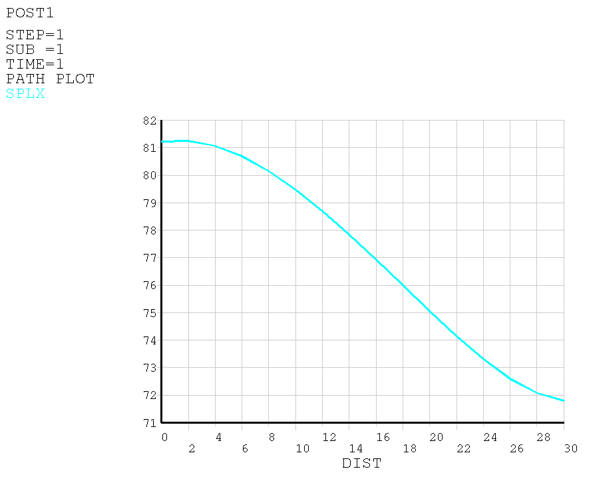VM299
VM299
Sound Diffusion in a Flat Room
Test Case
Sound diffusion is modeled in a flat room of size 30 × 30 × 3
m3. A sound source is placed at (2,2,1) with a sound power level
of 1 × 10-2 W. The wall absorption coefficient is equal to
0.1. The coefficient of atmospheric attenuation is 0.01 m-1.
Analysis Assumptions and Modeling Notes
Steady-state analysis is performed to determine the sound pressure level inside the room.
In the post-processing, the sound pressure level (SPL) is listed every 2 m along a line
passing through the room center at 1 m high. The sound pressure level is calculated in
Mechanical APDL as:
SPL = 10 × log10((ρ ×
c02 × w) /
Pref2)
where w is diffuse sound energy and reference pressure Pref = 2
× 10-5. Variation of SPL inside the room and along the
selected line is plotted in Figure 536: Sound Pressure Level in the Flat Room and Figure 537: Sound Pressure Level Along the Selected Line.





